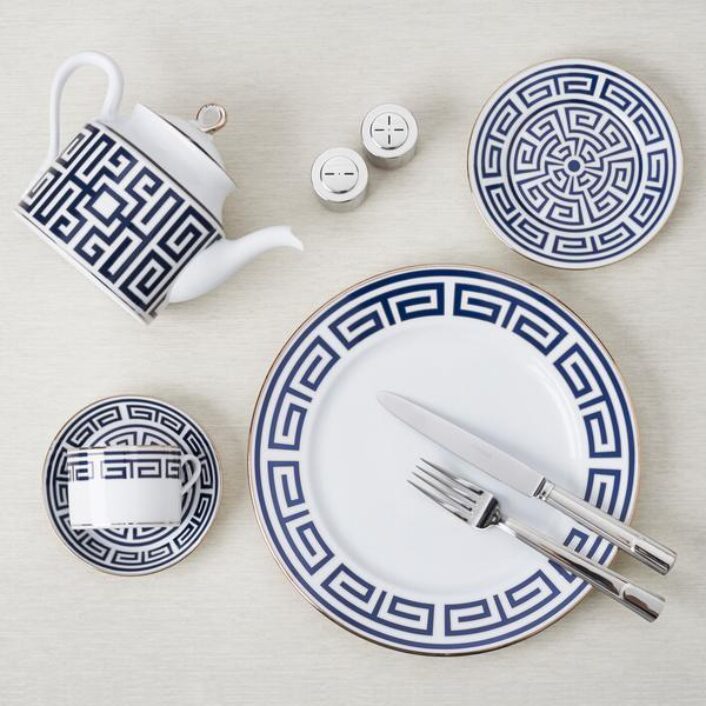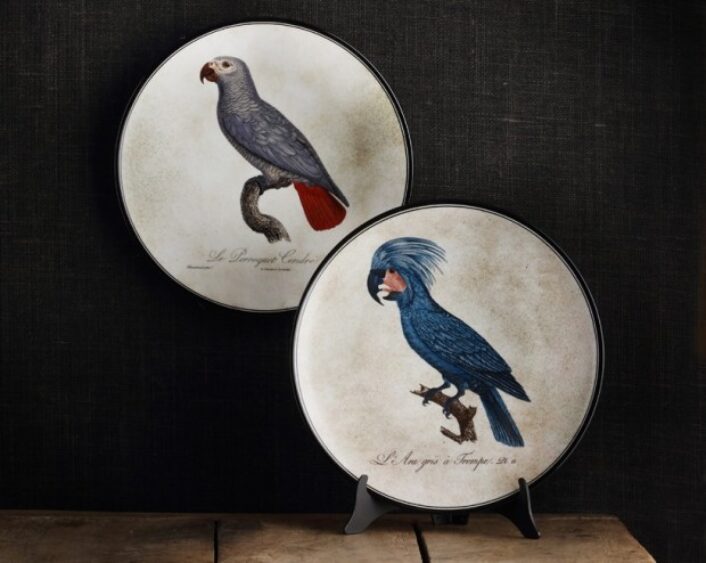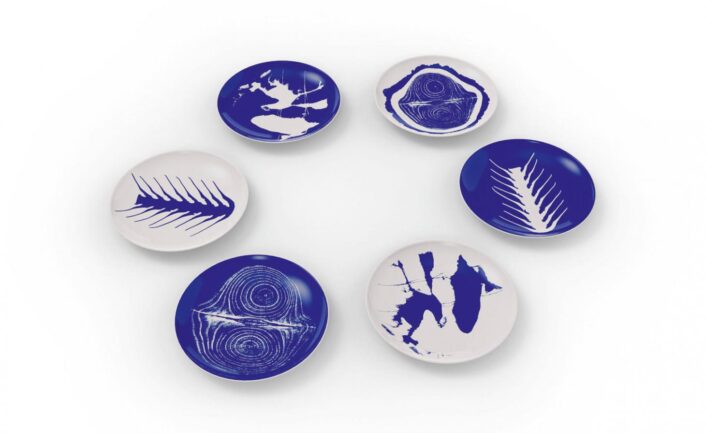Design
Ginori’s amazing collaborations
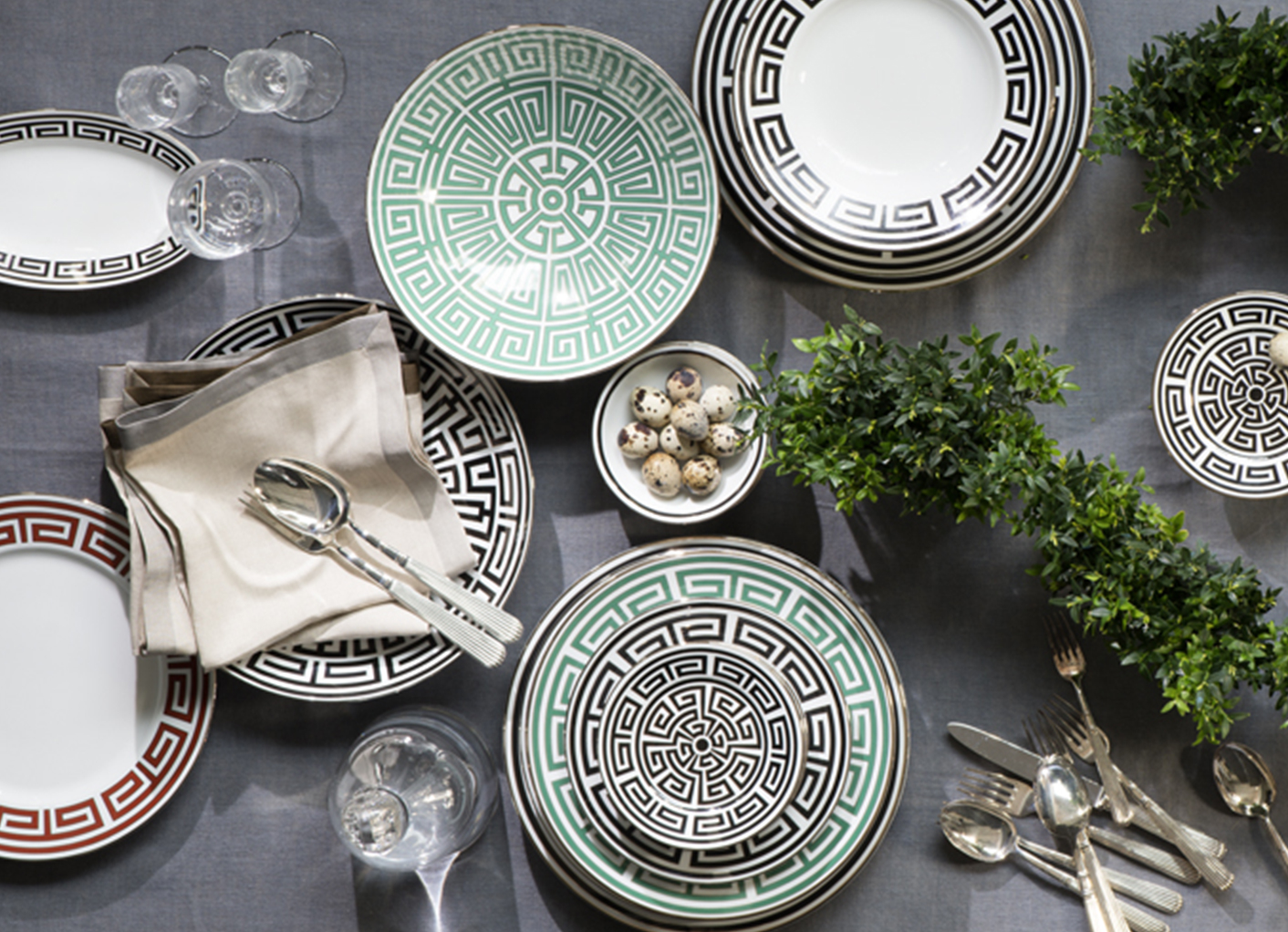
Labirinto Smeraldo Collection, inspired by Giò Ponti. The collection is available in four different colors.
Image courtesy of: Ginori 1735
For over two centuries, Ginori 1735 has been manufacturing porcelain at the Ginori Manufactory near Florence. Started by Marquis Carlo Andrea Ginori, the inspiration was to start a porcelain factory that would become a worldwide icon of style. That claim has never gone out of vogue and the mission of the Florentine maison remains consistent and steadfast.
However like everything else, a little innovation goes a long way. Collaborations have become familiar territory for the porcelain legend. The company’s artistic revolution first took hold in 1923 when Giò Ponti was declared creative director. Under Ponti’s tutelage, Ginori became innovative while respecting historical pieces and the Asian culture.
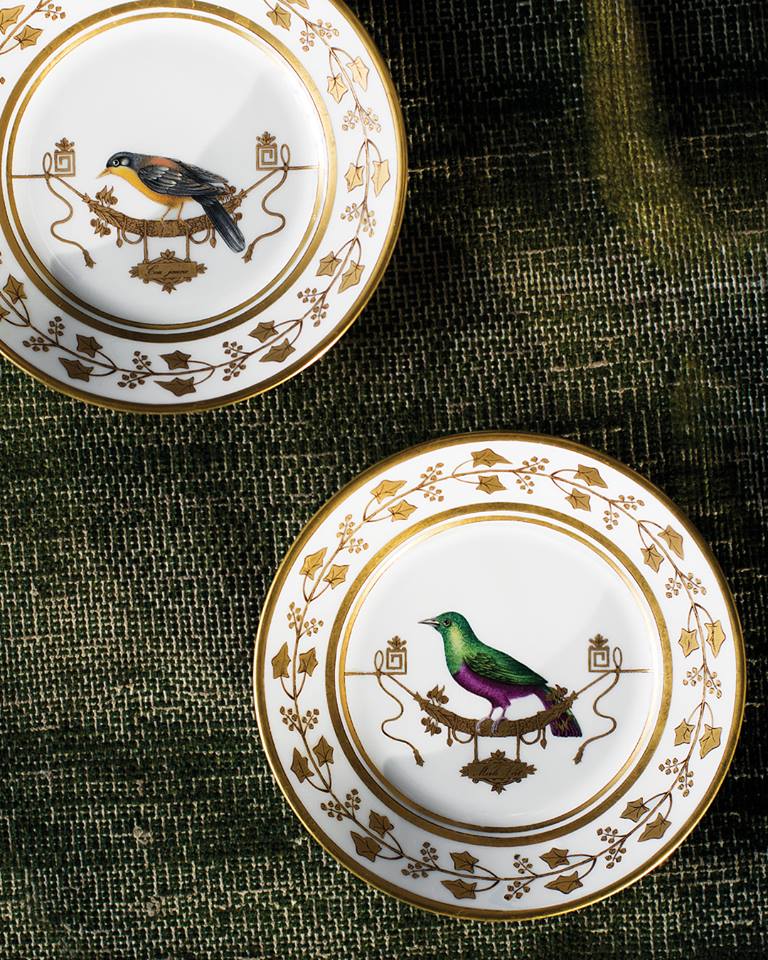
Volire is Alessandro’s new collection featuring twelve different birds. Hand-painted on white porcelain, the collection includes a palette of over fifty shades and has gold edging.
Image courtesy of: Gracious Style
In 2013, Manifattura Ginori was purchased by Gucci; the move saved the company from bankruptcy. Under artistic director Alessandro Michele, the brand was relaunched with a more contemporary overture. Patrizio di Marco, Gucci president and chief executive told The New York Times, “There are two essential factors that are pivotal to restructuring and re-launching Richard Ginori: respect for this historic brand and investment in its future.”
Luckily, Alessandro had previously worked with Tom Ford; thus, the designer was familiar with “updating” vintage motifs. Alessandro began by reviewing the archival book that held all of Ginori’s historical patterns. Dating back 280 years, the designs were elegantly updated.
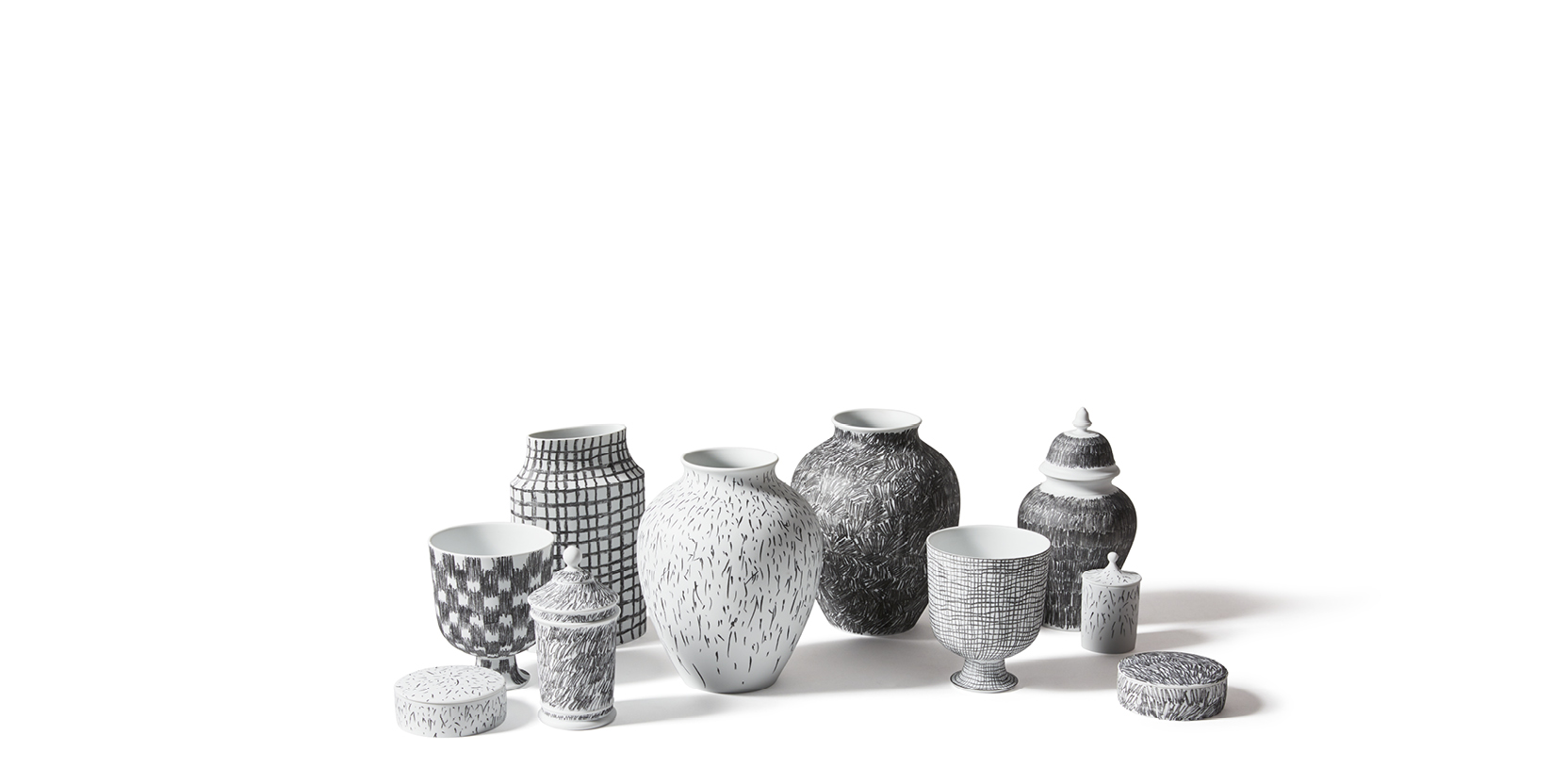
The collection includes vases, boxes, and candleholders in six graffito styles.
Image courtesy of: Cassina
Last year, Ginori collaborated with Cassina to produce Post Scriptum. The black and white collection features one-of-a-kind pieces designed by Formafantasma. As the revered Milan studio of Andrea Trimarchi and Simone Farresin, the collection was hand-drawn entirely using special ceramic chalk crayons.
The collection includes different-shaped vases and jars that are each numbered by the artist that produced the piece. Courtesy of Cassina, “The uniqueness of the handiwork consists of the “graffito” decorations on bisque porcelain obtained through direct firing: the graffito is designed on the surface with a black pigment and then set.”
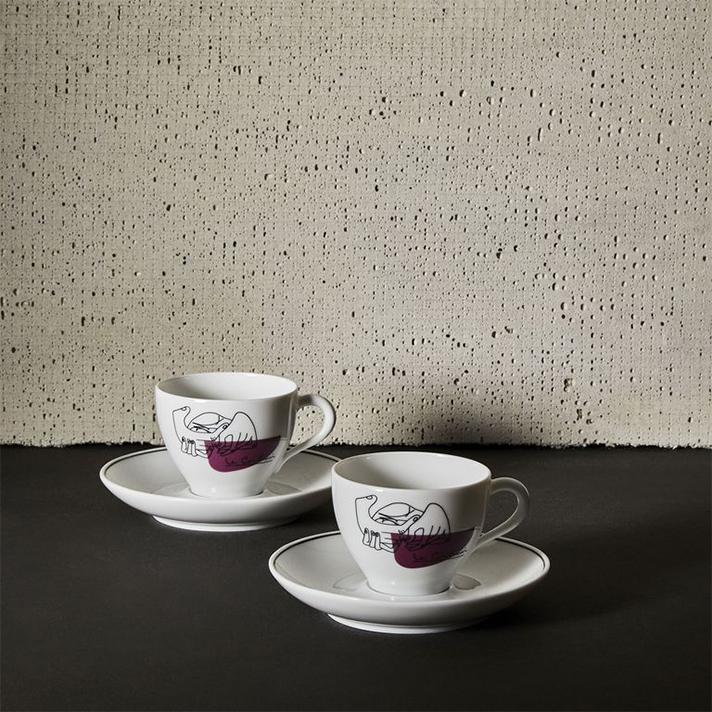
This collection was a tribute to Le Corbusier.
Image courtesy of: Elle Decor
Another collaboration, in conjunction with Cassina, was with Le Corbusier’s tablewares. Designed in 1961, the original pieces were designed for Madame Prunier’s London restaurant. Interestingly, the interlocking hands motif was found on the bottom of the Les Mains tapestry which was designed for Le Corbusier in 1951; it was displayed at the restaurant’s private room.
With reissuing the collection, Ginori ensured that close attention be paid to its authenticity. At the time, Le Corbusier made careful color selections for the dinner set that includes a plate, soup dish, dessert plate, and coffee cup with saucer. Specifically, this included a plum tone for the colored section where the three intertwined hands are drawn with a thin line that merges them together.
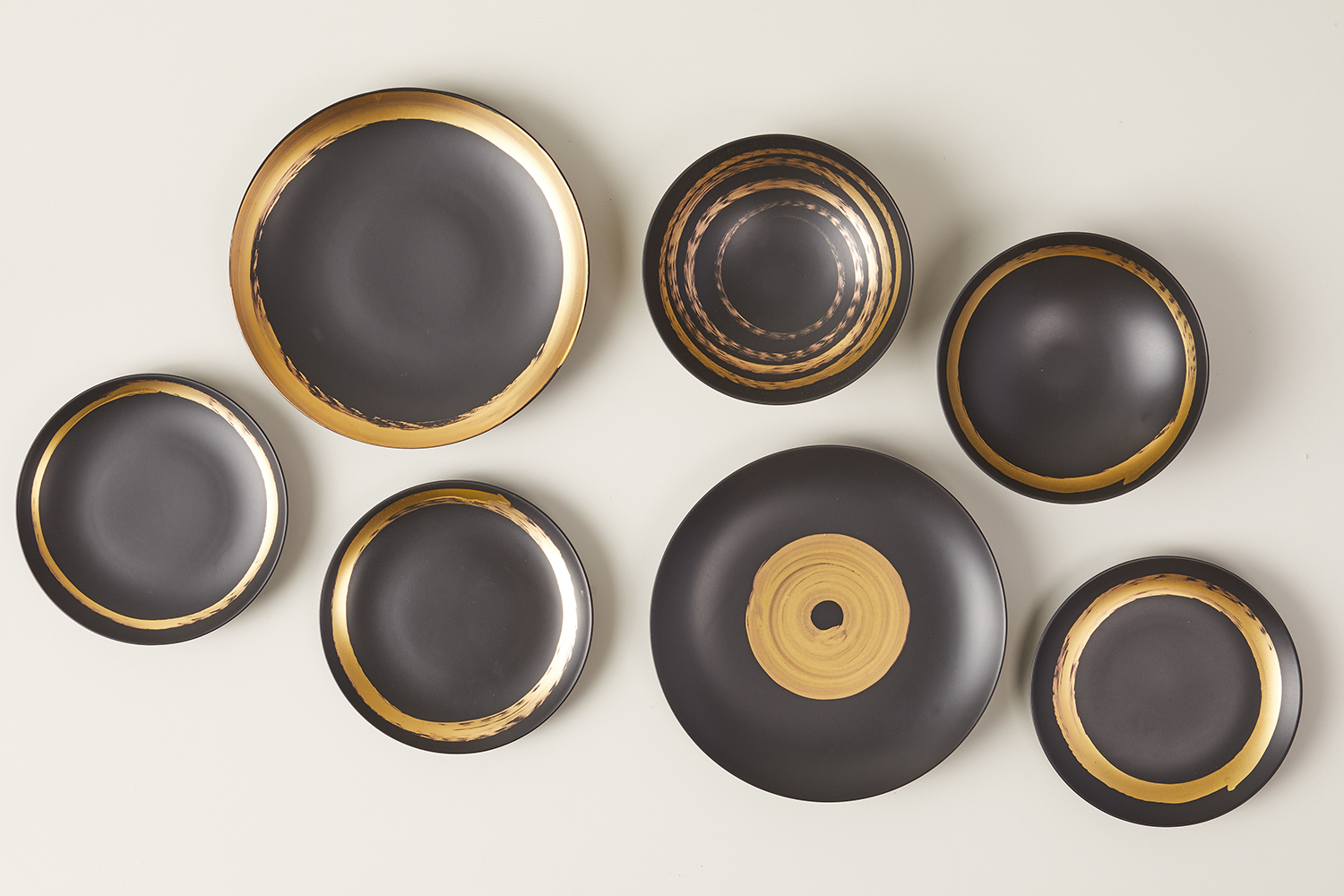
From Michele Oka Donor’s Fluidity collection for Ginori 1735’s Reborn Project. On view at David Gill Gallery, London.
Image courtesy of: Galerie Magazine
Another one of our favorite collaborations with the porcelain legend was with Michele Oka Donor. An American multi-media artist and author, Donor was especially adept at producing a collection of black, white, and gold works that include a table setting of 54 pieces. Courtesy of the designer’s web site, “When I was in graduate school we had to mix our own glazes…so I learned to make a matte black glaze, not shiny. When I thought about this project and I looked at the works produced [at Ginori], I saw there were very few matte, and nothing that…made a big statement in black,” she noted. “So like always, I went in another direction.”
There are so many collaborations to consider… and they range so many different styles. Regardless of your taste, it is vital to remember that Ginori 1735 has been around for almost 300 years. Oftentimes with established and mature companies such as this one, innovations and collaborations are hesitantly-made. However we love that the company remains open and true to exploring new avenues and including fresh perspectives!
